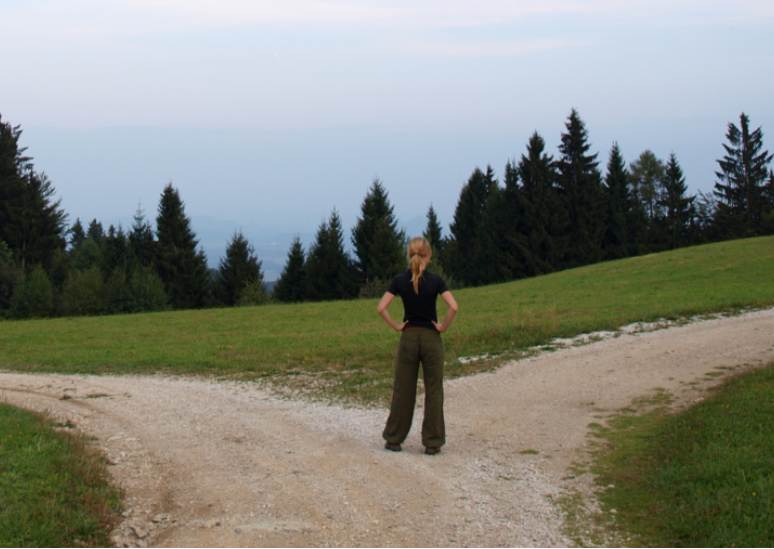
If you’ve ever found yourself thinking, “Why does this keep happening?”—you’re not alone. Abuse doesn’t happen in isolation. It follows a cycle. A predictable, exhausting pattern designed to confuse, control, and trap you.
But here’s what matters most: being caught in this cycle is not your fault. It doesn’t mean you’re weak, broken, or choosing abuse. It means you’re surviving in a system built to wear you down.
Understanding this pattern is the first step toward reclaiming your power. In this guide, you’ll learn how to break the cycle of abuse, why it’s so effective at keeping people stuck, and how you can begin stepping out of it—at your own pace, in your own way.
The cycle often starts so quietly that it’s easy to dismiss. The abuser becomes irritable, critical, or passive-aggressive. You might notice their tone sharpens, their patience wears thin, or they withdraw emotionally. You feel it before it’s visible—the shift in the air, the heaviness in your chest.
To keep the peace, you start adjusting. You manage their moods, anticipate their reactions, and work overtime to avoid conflict. You blame yourself for their tension. Maybe you believe if you just say the right thing or behave perfectly, you can prevent what’s coming.
But no amount of self-sacrifice can stop the tension from escalating. This stage is designed to wear you down emotionally, preparing you for the next phase.
Eventually, the tension reaches a breaking point. The abuser lashes out—verbally, emotionally, financially, spiritually, sexually, or physically. For survivors, this moment feels like a storm you saw coming but couldn’t stop. Fear, shock, shame, and deep confusion follow.
No matter how much you analyze the situation, the truth remains: you didn’t cause it. The abuser chose it.
This is where the cycle becomes especially confusing and emotionally manipulative. Suddenly, the person who hurt you becomes loving, attentive, and even remorseful.
They might cry, apologize profusely, and take full responsibility—at least on the surface. Gifts appear: flowers, cards, surprise dinners. They shower you with affection, saying all the right things: “I’ll change this time,” or “You mean everything to me.” The abuser may even become more physically affectionate, offering hugs, kisses, or holding you close in ways that feel comforting and familiar.
You remember why you loved them. You see glimpses of the person you hoped they would be. The intensity of their affection can create a powerful emotional bond, reinforcing hope that “this time” will be different.
But this phase isn’t real change. It’s a reset—part of the manipulation to draw you back in.
Life feels “normal” again. The abuser may act pleasant, attentive, even loving. You begin to doubt your own memories of the abuse. “Maybe it wasn’t that bad. Maybe I overreacted.”
But under the surface, nothing has changed. The same patterns are quietly building toward another explosion.
And so, the cycle repeats.
The cycle of abuse is effective because it manipulates your emotions, especially your hope, empathy, and fear. The intermittent kindness creates trauma bonds—making you feel deeply connected even when you’re being hurt.
Practical barriers also keep survivors trapped:
Dysfunction becomes familiar, it feels safer than the unknown. The cycle thrives on that familiarity.
The most insidious part of abuse is how normal it can begin to feel. Over time, survivors adapt to the dysfunction, often believing the problem is with them—not the abuser. That’s exactly how the cycle of abuse keeps you stuck.
Recognizing the cycle starts with identifying repeating patterns, not isolated moments. For example, jealousy might be disguised as concern—constant texting, needing proof of where you’ve been, or even checking your phone and emails under the guise of “trust.” What seems like care is really control.
Isolation often follows. You may find yourself slowly pulled away from friends and family, whether through guilt trips, subtle interference, or outright forbidding contact. Soon, the only voice you hear is theirs.
Blame becomes another tool. Every argument, every problem, every bad mood somehow circles back to being your fault. Criticism, name-calling, and shaming are passed off as jokes or “tough love,” leaving you questioning your own worth.
Perhaps most confusing are the mood swings. The abuser can shift from kind to cruel in an instant, keeping you in a constant state of emotional whiplash. Just when you think things are improving, the cycle resets.
Seeing these patterns for what they are is painful—but powerful. It’s the first real step in understanding how to break the cycle of abuse. You’re not imagining it. You’re not the problem. The cycle is.
Breaking the cycle of abuse isn’t always about packing a bag and leaving overnight. Often, it begins with small, intentional steps.
Start keeping a private log of incidents and emotional patterns. Document how the tension builds, what the abuse looks like, and how you feel during the honeymoon and calm phases. This helps counteract gaslighting and reinforces your reality.
Isolation is a key part of abuse. Rebuilding your support network—trusted friends, family, or support groups—is essential. Even one safe connection can remind you of your worth.
Begin practicing small boundaries. This might mean refusing to engage in arguments, carving out time for yourself, or simply saying “no” without explanation. These acts of self-respect weaken the cycle’s hold.
If leaving becomes the next step, prepare a detailed, discreet safety plan. Connect with local shelters or hotlines for support and guidance.
Each of these steps is a piece of how to break the cycle of abuse—bit by bit, reclaiming your power.
If this resonates with you, know that you are not crazy. You are surviving a system designed to manipulate and control. The cycle of abuse is insidious, blending kindness with cruelty to keep you trapped.
But every small act of awareness, every boundary you set, every step toward support is a crack in the cycle’s foundation. This is how it begins.
You are not broken. You are not weak. You are reclaiming your life, one choice at a time.
Breaking the cycle of abuse is not giving up. It’s choosing yourself.
Join one of our support groups designed for women breaking free from old patterns and reclaiming their identity.
Still reflecting quietly for now?
Join the mailing list to receive weekly encouragement, guided reflections, and emotional healing tools.

loree@loreetamayo.com
210.326.6662
1320 Arrow Point Drive, Ste. 501
Cedar Park, TX 78613
Design by Bradcable